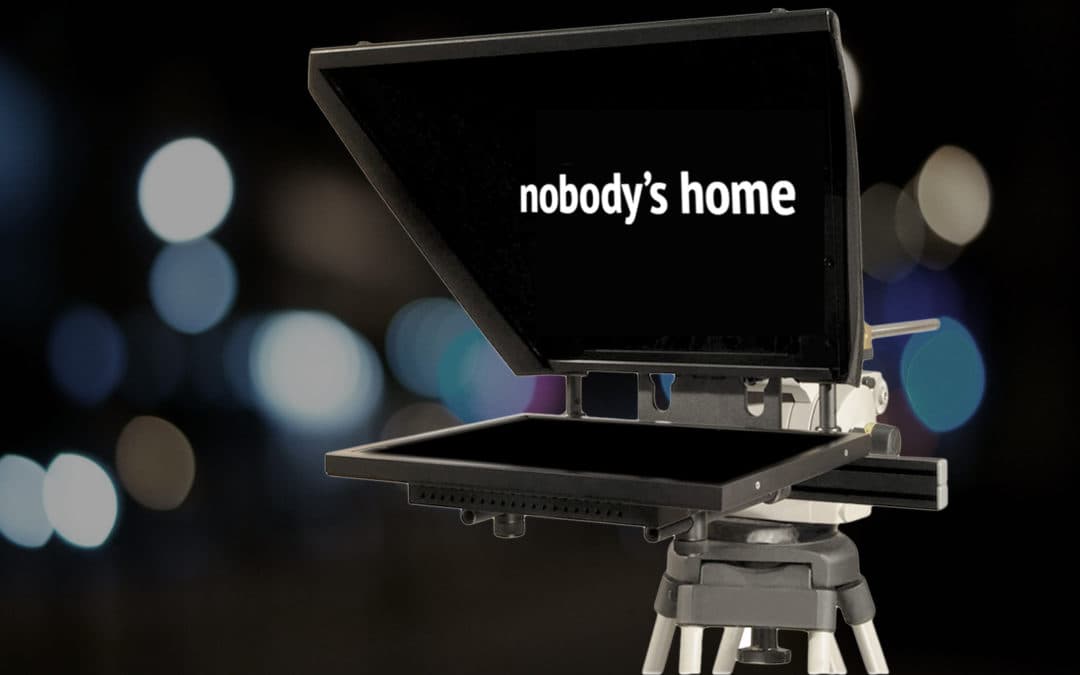Does the idea of appearing on video wrack your nerves? You’re not alone. People often think using a teleprompter make them more confident on camera and remove the risk of poor performance. But it can actually make you appear more awkward and inauthentic on camera.
TED knows a thing or two about speaking to an audience, and they stopped using teleprompters completely a few years ago.TED’s content director said the decision was made to ditch the teleprompter because ‘it will cause people to disengage from the audience.’
In our experience as video producers, a teleprompter is a crutch you don’t need. You are also at risk of your teleprompter not working or seizing part the way through your speech. Instead of carrying on ad lib, you may freeze because you haven’t learnt the skill and lack the confidence to go on.
Learning how to present naturally on camera is easier than you may think – it all comes down to practice. Instead of a teleprompter, use keywords on a palm card or memorise your talk. Each of the keywords acts as a trigger to remind you of a point to make or a story to retell. You want to deliver a strong opening and closing – practice these so you can deliver them with confidence.
You could argue that plenty of leaders have delivered great speeches using a teleprompter. However, many of them have had hours of coaching and media training to learn how to speak without it looking like they are reading. If you aren’t going to invest the same time and resources into coaching on how to use a teleprompter effectively, do away with it.
How to be Confident on Camera
Unlike leaders who are delivering their speech to a live audience in the room (and possibly millions of people on TV), you have the benefit of being able to do multiple takes.
So, if you mess it up a couple of times, it doesn’t matter. The video can be edited so you can keep going until you are happy with your performance.
Follow these tips to look confident on camera:
- Be aware of any nervous habits you have (swaying, moving in your chair, saying ‘um’ or ‘ah’ too often, or clearing your throat) and try hard to stop yourself doing these things.
- Know what makes you feel relaxed so you can do it just before going on camera
- Don’t go for perfect – you will look more natural if you include the odd um, ah or pause.
- Be familiar with your speech but don’t memorise it word for word – you don’t want to deliver an address that no one remembers because it was all one monotone, boring voice.
- Remember not to talk too fast or too slow.
- Practice speaking to the camera. If you are at risk of memorising your speech, choose a few different topics you can talk about off the cuff.
- Do some research by watching other people talking on camera and make a note of what they did well or otherwise.
RELATED: How to Write a Video Script – 6 Expert Tips
How to Be Natural on Camera
It’s a fact: the less rehearsed you are, the more natural you look on camera.
Reading your speech doesn’t give you the opportunity to build rapport with your audience. The audience can tell you are reading rather than ‘speaking’ to them through the camera.
Knowing how to act naturally on camera comes as second nature to some while it has to be learned by others. This is why it is important to make sure you use an experienced producer for your videos. A good producer knows how to speak to people to get the best out of them while making them feel confident and relaxed in front of the camera.
If you’d like help shooting your next video, get in touch today or watch our showreel for ideas.


